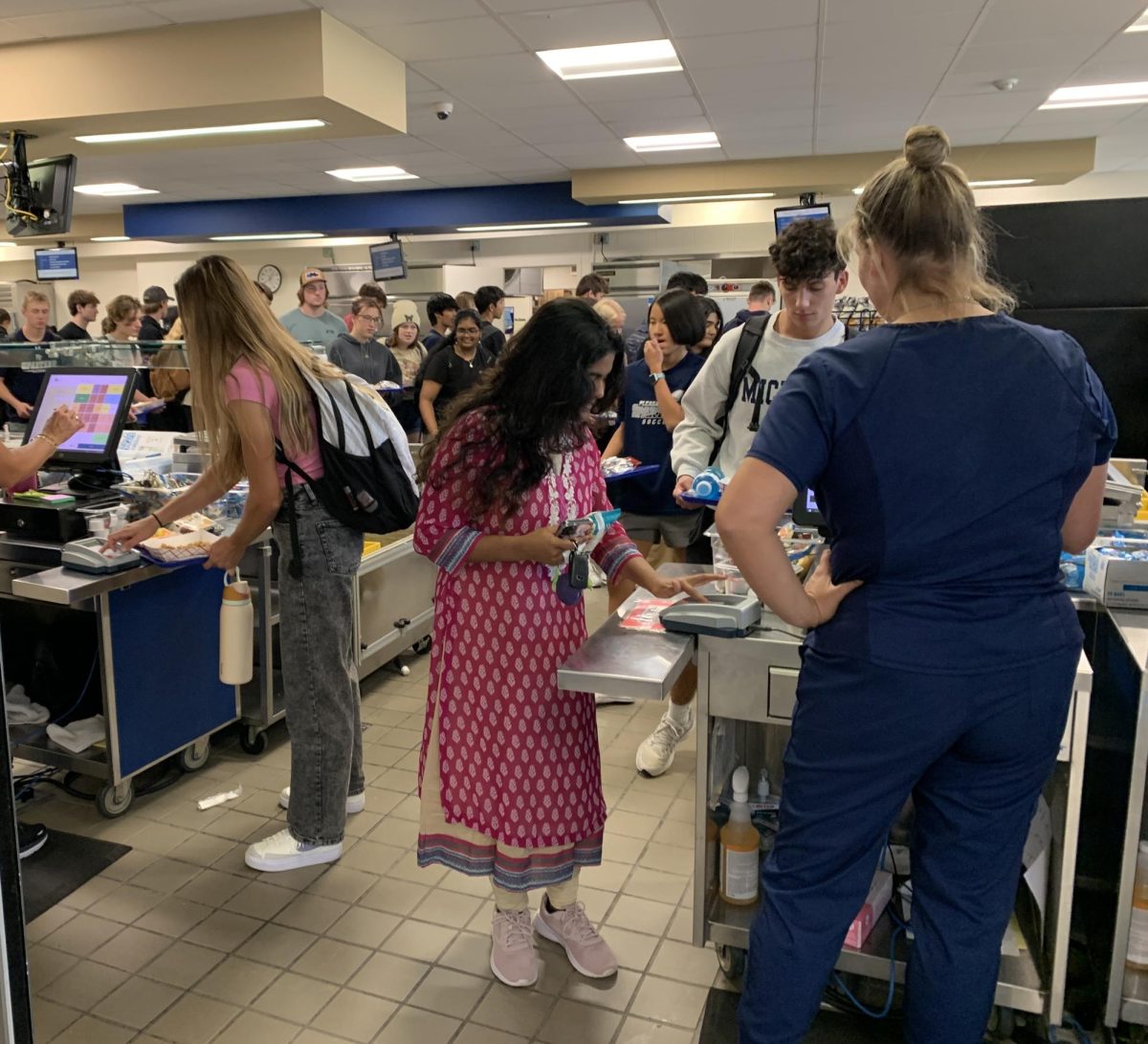Students at PVHS have identified the inability of the cafeteria to accommodate specific dietary needs. Though food selection is possible, the options lack variety, forcing students to choose between cycling through the same meals or bringing their own lunch.
As of 2021, about 5% of children 8 to 17-years-old were vegetarian or vegan. Considering Pleasant Valley’s student population of 5,700, nearly 300 students across the district are vegetarian, with vegetarianism ever on the rise. Other dietary restrictions, including gluten-free and dairy-free, are also common.
These restrictions are not a novelty, yet students still note limited choices. “Since I stopped eating meat, I’ve brought my lunch everyday. Most of the cafeteria options include meat. The alternatives are the salad bar or a prepackaged sandwich box, neither of which are my first choice,” shared senior Katy Babcock.
Upon observation, this sentiment is undoubtedly true. In the past week only two days provided a vegetarian option. In any given week, there are around three days with vegetarian meals, deterring students from eating at school.
The administration, however, seems to find no problem with the choices. “I feel we have a great selection of gluten free and vegetarian items. It may take being a bit more proactive, but those items are there for you!” shared Corie Gamble, Food Service Director.
Even on days with vegetarian meals, the items actually tend to be less healthy than the options with meat. While a vegetarian diet has proven health benefits in decreasing risks of cancer, coronary heart disease and other chronic diseases, the entrées at PV do not reflect this.
With very little variation, almost all of the vegetarian lunches-pizza, mozzarella sticks, macaroni and cheese-have close to double the amount of saturated fat as common meat options. The pizza crunchers, for example, contain eight grams of saturated fat, over one third of the daily recommendation, while items including the spicy chicken wrap, mini turkey corn dogs, and chicken fajitas all contain less than four grams.
In the 2022-2023 school year and beginning of this year, multiple new menu items were also introduced, including cherry blossom chicken, Louisiana chicken sandwich and cheesy taco pasta. Nearly all of the various lunch additions are not vegetarian-friendly.
This trend has not gone unnoticed. “The students with food sensitivities may be in the minority but that does not mean they shouldn’t have any less access to school lunch. The school does not have to make everything without gluten, meat or dairy, but there should at least be enough options that a student can find something that fits their needs,” voiced Babcock.
Amidst general excitement about new lunch options, the students who are left out must compromise with increasingly finite options. In reality, because intrigue stems more from the advent of new items than their contents, interest in a dietarily compatible addition would likely parallel that of a meal containing meat.
Yet, the school continues to bring in what is most popular among students, often meaning that meals with meat stay on the menu. However, no heavy requirements for including or leaving out meat in school lunches are actually present.
“Due to the Final Rule-Transitional Standards for Milk, Whole Grains and Sodium, the foods we serve must contain considerably less sodium than in years past. … The Final Rule also requires at least 80% of the weekly grains in the school lunch and breakfast menus to be whole grain and allows us to offer flavored, low-fat milk,” explained Gamble, who, along with other food service staff, creates the menus.
Reflecting on the current absence of accessible options, there are significant ways in which PV’s food service can adapt and improve. Despite the ability to adjust to a more widely enjoyable selection involving alternative plant-based proteins, action toward this change is stagnant.
PV claims to be “continuously improving and customizing the educational experience,” inevitably encompassing the non-academic aspects of schools as well, including cafeterias. To truly account for the needs of all students, more effort must be put into bringing in a wider selection for everyone.









